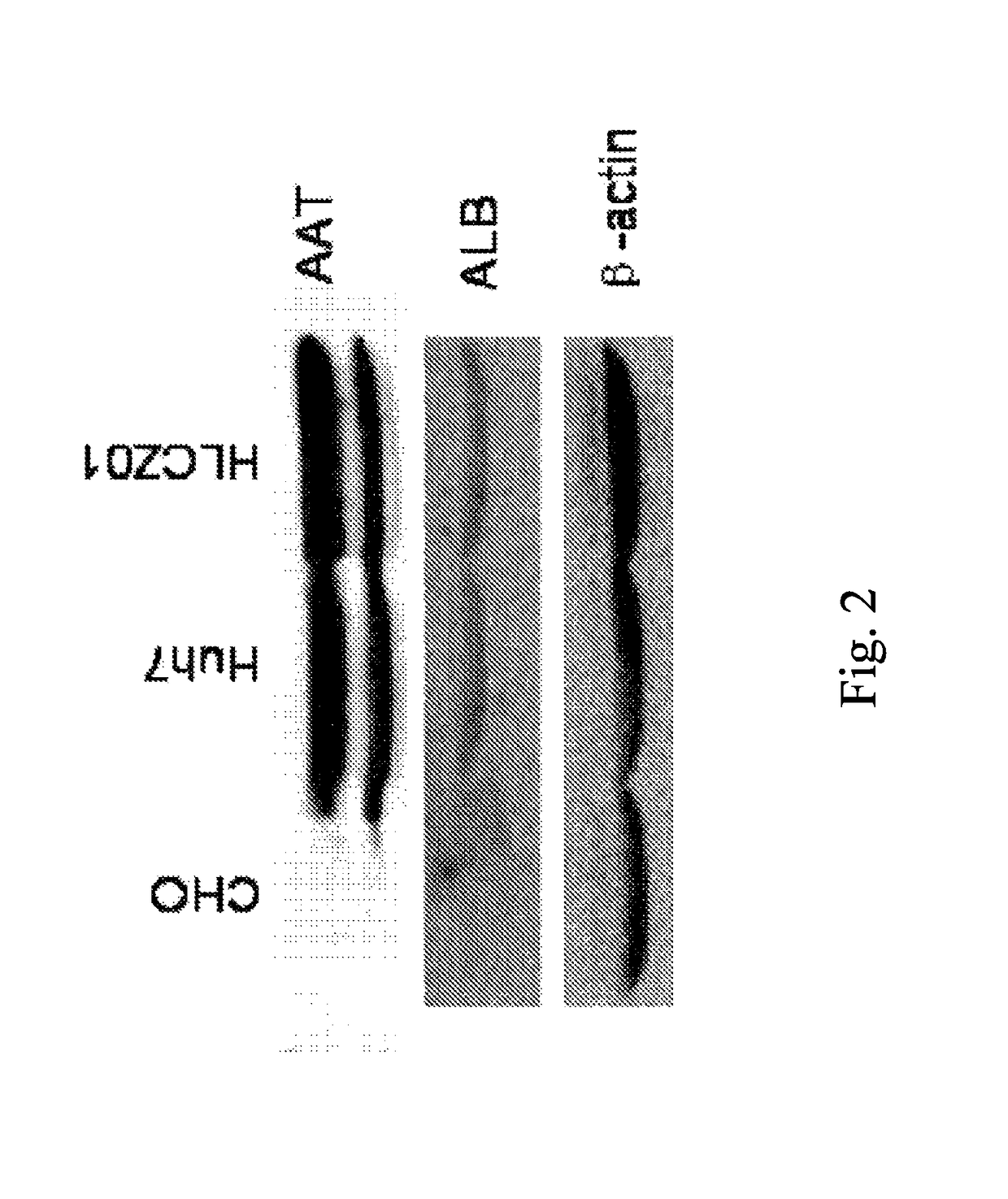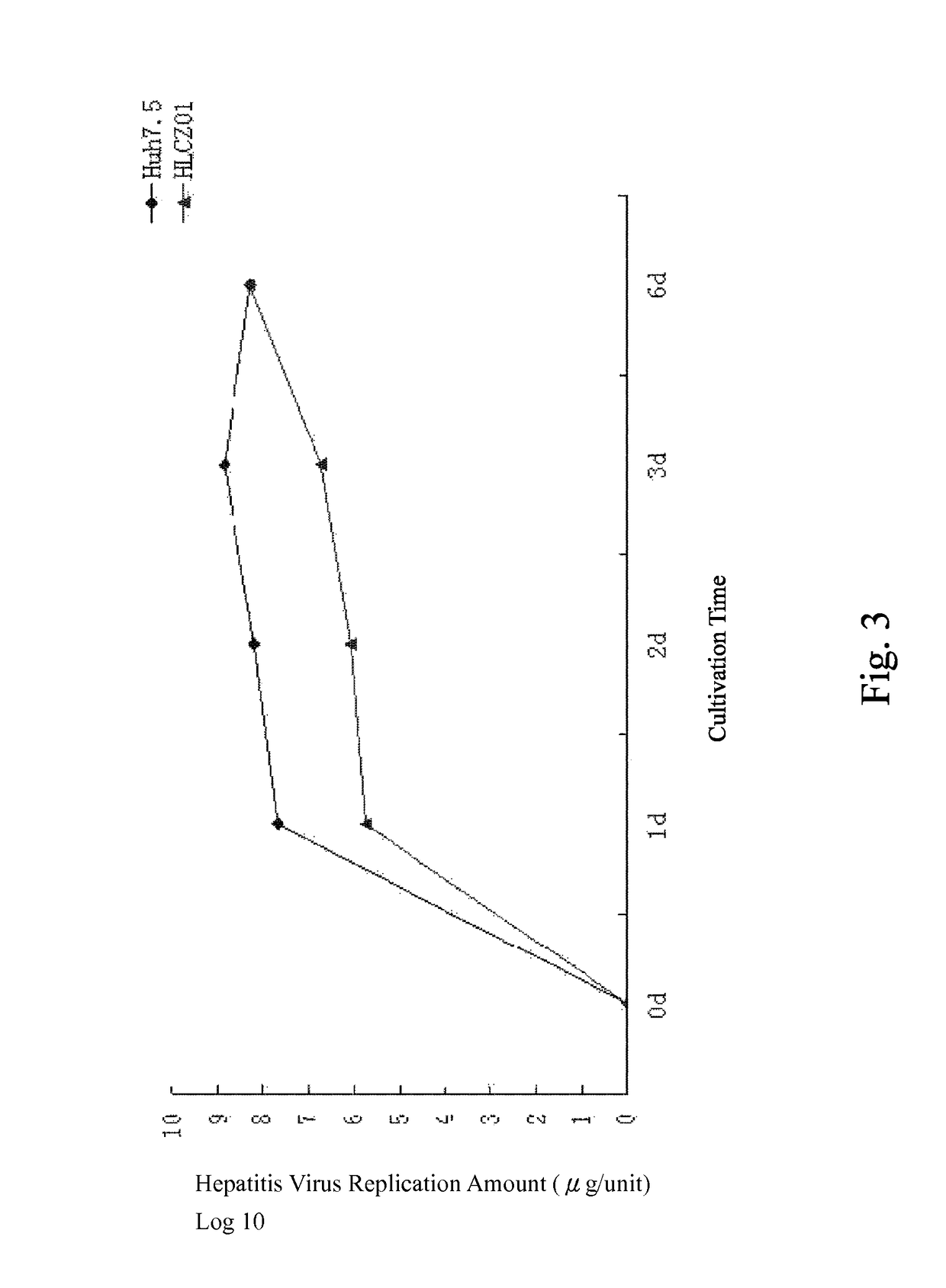Human hepatoma cell line HLCZ01 and uses thereof
a human hepatocyte and cell line technology, applied in the field of human hepatocyte cell lines, can solve the problems of insufficient culture techniques for maintaining hepatocytes, insufficient establishment of replicative cultures of adult human hepatocytes, and inability to maintain normal human hepatocytes at present. achieve the effect of liver function abilities
- Summary
- Abstract
- Description
- Claims
- Application Information
AI Technical Summary
Benefits of technology
Problems solved by technology
Method used
Image
Examples
Embodiment Construction
[0048]The following description is disclosed to enable any person skilled in the art to make and use the present invention. Preferred embodiments are provided in the following description only as examples and modifications will be apparent to those skilled in the art. The general principles defined in the following description would be applied to other embodiments, alternatives, modifications, equivalents, and applications without departing from the spirit and scope of the present invention.
[0049]The following embodiments, if no special instructions, are accomplished in conventional methods. The experimental materials and biological agents used in the following embodiments, if no special instructions, are available from conventional commercially reagents. The quantitative experiments in the following embodiments are repeated three times to obtain average results.
[0050]Experimental materials and reagents used in the following embodiments:
[0051](1) Cell Culture: human hepatoma cell li...
PUM
| Property | Measurement | Unit |
|---|---|---|
| size | aaaaa | aaaaa |
| concentration | aaaaa | aaaaa |
| size | aaaaa | aaaaa |
Abstract
Description
Claims
Application Information
 Login to View More
Login to View More - R&D
- Intellectual Property
- Life Sciences
- Materials
- Tech Scout
- Unparalleled Data Quality
- Higher Quality Content
- 60% Fewer Hallucinations
Browse by: Latest US Patents, China's latest patents, Technical Efficacy Thesaurus, Application Domain, Technology Topic, Popular Technical Reports.
© 2025 PatSnap. All rights reserved.Legal|Privacy policy|Modern Slavery Act Transparency Statement|Sitemap|About US| Contact US: help@patsnap.com



